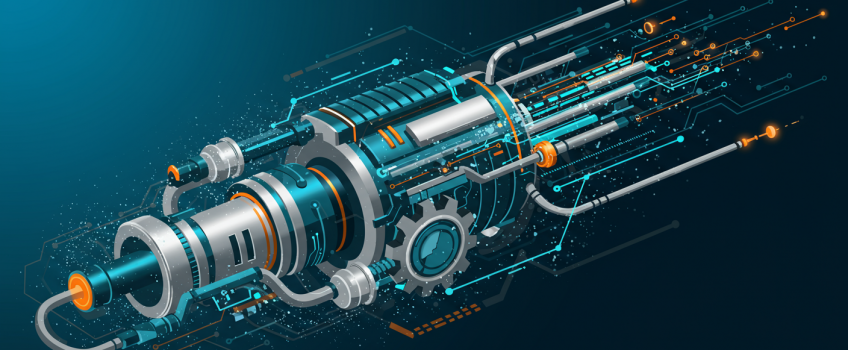15 Kafka Performance Tips - Beyond Basics

15 Actionable Tips for Optimizing Apache Kafka Performance - Beyond the Basics
Apache Kafka is renowned for its high-throughput and low-latency capabilities. However, merely deploying Kafka doesn't automatically guarantee peak performance for every workload. While basic configurations like batching and acknowledgments are well-known, truly unlocking Kafka's potential requires diving deeper into a range of nuanced settings across producers, brokers, consumers, and the underlying operating system. Many organizations hit performance ceilings because they overlook these advanced optimization levers.
At ActiveWizards, we've helped numerous clients fine-tune their Kafka clusters for the most demanding applications, from real-time financial data processing to massive IoT data ingestion. This article compiles 15 actionable tips that go beyond the standard advice, empowering you to systematically enhance your Kafka deployment's efficiency, throughput, and latency. These are insights gleaned from real-world scenarios where advanced tuning made a critical difference.
Producer Optimization Tips
1. Master `max.in.flight.requests.per.connection` with Idempotence
While the default of 5 for max.in.flight.requests.per.connection allows for pipelining, ensure your producer is idempotent (enable.idempotence=true). This allows safe retries without message duplication, making higher in-flight request values truly effective for throughput. Without idempotence, setting this above 1 can lead to out-of-order messages upon retry if the first attempt eventually succeeds after a retry was already sent.
2. Choose `zstd` for Superior Compression
While snappy and lz4 are good, zstd (available since Kafka 2.1) often offers significantly better compression ratios at comparable or even lower CPU costs, especially at higher compression levels. This means less network bandwidth usage and smaller disk footprint. Benchmark zstd (e.g., compression.type=zstd) against lz4 for your specific data patterns. Remember to consider client CPU capacity if brokers offload decompression.
| Compression | Typical Ratio | CPU Usage | Notes |
|---|---|---|---|
none |
1.0x | Lowest | Use if CPU bound & network/disk are ample. |
snappy |
2-3x | Low | Good general purpose. |
lz4 |
2-4x | Low | Often slightly better ratio than Snappy. |
gzip |
4-6x | High | Best ratio for text, but CPU intensive. |
zstd |
3-7x | Low-Medium | Excellent balance, often best overall. Configurable levels. |
3. Implement a Custom Partitioner for Skewed Keys
If your message keys have a skewed distribution, Kafka's default hash-based partitioner can lead to uneven load across partitions (hot partitions). A custom partitioner (implementing org.apache.kafka.clients.producer.Partitioner) can distribute data more evenly based on your specific key characteristics or business logic, improving overall cluster balance and throughput.
// Example: props.put(ProducerConfig.PARTITIONER_CLASS_CONFIG, YourCustomPartitioner.class.getName());
public class YourCustomPartitioner implements Partitioner {
public void configure(Map<String, ?> configs) {}
public int partition(String topic, Object key, byte[] keyBytes, Object value, byte[] valueBytes, Cluster cluster) {
// Your custom logic here to determine partition
// e.g., handle null keys, or apply a different hashing for specific key patterns
List partitions = cluster.partitionsForTopic(topic);
int numPartitions = partitions.size();
if (keyBytes == null) {
// Handle null keys, perhaps round-robin or a default partition
return ThreadLocalRandom.current().nextInt(numPartitions);
}
return Utils.toPositive(Utils.murmur2(keyBytes)) % numPartitions; // Default logic as example
}
public void close() {}
}
Broker Optimization Tips
4. Tune Broker Thread Pools: `num.network.threads` & `num.io.threads`
Defaults (3 network, 8 I/O) are conservative.
num.network.threads: Handles network communication. Increase if your brokers show high network processor utilization (e.g., `kafka.network:type=SocketServer,name=NetworkProcessorAvgIdlePercent` is low). A good starting point is the number of CPU cores.num.io.threads: Handles disk I/O and request processing. Increase if request queue times are high or CPU utilization for these threads is saturated. Values like `2 * num_cores` can be a start.
Monitor CPU utilization and idle percentages for these thread pools to find optimal values. Over-provisioning can lead to context switching overhead.
5. Strategically Use Multiple `log.dirs` on Separate Physical Disks
Configuring multiple log.dirs on different physical disks (not just partitions of the same disk) allows Kafka to distribute I/O load for log writing and reading across multiple spindles or SSDs. This significantly improves disk throughput, especially for write-heavy workloads or when brokers host many leaders/followers.
For Kafka, a JBOD (Just a Bunch Of Disks) configuration, where each disk is mounted separately and assigned to a log.dir, is often preferred over RAID 0/5/6 for data disks. Kafka's own replication provides data redundancy. JBOD maximizes I/O parallelism and avoids RAID controller bottlenecks or write penalties (for RAID 5/6).
6. Align `message.max.bytes`, `replica.fetch.max.bytes`, and Client Settings
Mismatched large message settings are a common source of performance issues and errors. Ensure:
- Broker:
message.max.bytes(max individual message size broker accepts). - Broker:
replica.fetch.max.bytes(max size a follower will fetch, must be >=message.max.bytes). - Topic: Can override
max.message.bytesper topic. - Producer:
max.request.size(must be >= largest batched message). - Consumer:
fetch.max.bytes(max data returned in a fetch) andmax.partition.fetch.bytes(max data per partition in a fetch, must be >=message.max.bytes).
Setting these appropriately prevents large messages from being rejected or causing replication bottlenecks.
7. Leverage `num.replica.fetchers` for Follower Catch-up
If follower replicas consistently lag behind leaders (monitor kafka.server:type=ReplicaFetcherManager,name=MaxLag,clientId=Replica), increasing num.replica.fetchers (default: 1) can help. This increases the number of threads dedicated to fetching data from leaders, especially useful if a broker is a follower for many partitions or if network latency is a factor.
Consumer Optimization Tips
8. Utilize Static Group Membership to Reduce Rebalances
For consumer groups with stable membership (e.g., Kubernetes deployments with persistent pod identities), configure static membership by setting group.instance.id on each consumer instance to a unique, persistent value. This significantly reduces rebalance occurrences during controlled restarts or brief consumer unavailability, as the broker remembers the member and its partition assignments for session.timeout.ms.
# Consumer config
group.id=my-stable-consumer-group
group.instance.id=consumer-instance-alpha-1 # Must be unique within the group
9. Implement Asynchronous Message Processing
If individual message processing is time-consuming (DB lookups, API calls), it can bottleneck your consumer's polling loop, leading to high max.poll.interval.msviolations. Decouple polling from processing:
- Poll a batch of records.
- Submit these records to a separate thread pool for processing.
- Commit offsets once processing is complete (carefully, considering order and failure).
This allows the consumer to continue polling and heartbeating while messages are processed in parallel.
Diagram 1: Conceptual Asynchronous Consumer Processing Pattern.
10. Adjust `max.poll.interval.ms` and `max.poll.records` Symbiotically
max.poll.interval.ms (default: 5 min) is the max time between `poll()` calls before a consumer is considered dead. max.poll.records(default: 500) is max records per poll. If processing 500 records takes longer than 5 minutes, you'll get rebalances.
- If processing is fast: You can reduce
max.poll.interval.msfor faster failure detection. - If processing is slow per record: Reduce
max.poll.recordsso a batch is processed withinmax.poll.interval.ms, or increasemax.poll.interval.ms(cautiously, as it delays failure detection). Asynchronous processing (Tip #9) is often a better solution here.
OS & Hardware Tuning Tips
11. Set CPU Governor to `performance`
Modern CPUs use frequency scaling to save power. For Kafka brokers, this can introduce latency spikes as the CPU ramps up. Set the governor to `performance` to keep CPUs at their maximum frequency.
# For all cores
for i in /sys/devices/system/cpu/cpu*/cpufreq/scaling_governor; do sudo sh -c "echo performance > $i"; done
# Persist using tools like cpupower or tuned.
12. Minimize Swappiness: `vm.swappiness=1`
Kafka relies heavily on the OS page cache. Swapping out Kafka's JVM heap or critical page cache data to disk will devastate performance. Set `vm.swappiness` to a very low value (e.g., 1) to strongly discourage swapping.
sudo sysctl -w vm.swappiness=1
# Add to /etc/sysctl.conf or /etc/sysctl.d/ for persistence:
# vm.swappiness = 1
13. Optimize TCP Buffers (`sysctl` network settings)
For high-bandwidth, high-latency (or even LAN) environments, default TCP buffer sizes might be insufficient. Tune:
net.core.rmem_max,net.core.wmem_max(max OS send/receive buffer).net.ipv4.tcp_rmem,net.ipv4.tcp_wmem(TCP-specific min, default, max).net.ipv4.tcp_mtu_probing=1(useful for path MTU discovery).
Values depend on Bandwidth-Delay Product. Incorrectly large values can also waste memory. Consult Linux networking guides for specific calculations.
Cross-Cutting & Monitoring Tips
14. Proactive Monitoring of Key "Beyond Basics" Metrics
Go beyond simple throughput/latency. Monitor:
- Broker Network Processor Idle: `kafka.network:type=SocketServer,name=NetworkProcessorAvgIdlePercent` (Low values indicate network thread bottleneck).
- Broker Request Queue Time: `kafka.network:type=RequestMetrics,name=RequestQueueTimeMs` (High values indicate I/O threads are overwhelmed).
- Broker Log Flush Time: `kafka.log:type=LogFlushStats,name=LogFlushRateAndTimeMs` (High flush times point to disk I/O issues).
- Follower Max Lag: `kafka.server:type=ReplicaFetcherManager,name=MaxLag,clientId=Replica` (Indicates replication issues).
- Consumer Join/Sync Rate & Time: `kafka.consumer:type=consumer-coordinator-metrics,client-id=...` (High rates/times indicate rebalance storms).
- OS Page Cache Hit Ratio & Disk I/O Wait: Using OS tools (`sar`, `iostat`, `vmstat`).
15. Right-Size Partitions Based on Throughput Targets AND Consumer Parallelism
Don't just add partitions blindly. Consider:
- Target Throughput per Partition: A single partition has a physical limit (e.g., 10-50MB/s depending on setup). If a topic needs 100MB/s, you need at least 2-10 partitions.
- Consumer Parallelism: Max consumer instances in a group is equal to the number of partitions. If you need 20 parallel consumers, you need at least 20 partitions.
- Overhead: Too many partitions (thousands per broker) increases metadata overhead, Zookeeper load (for older versions), and leader election time. Find a balance.
Kafka performance tuning is not a one-time task. It's an iterative process of identifying bottlenecks, making targeted changes, and measuring the impact. Changes in one area (e.g., producer batching) can shift the bottleneck elsewhere (e.g., broker disk I/O). A holistic view and continuous monitoring are essential for sustained optimal performance.
Conclusion: Elevating Your Kafka Performance Game
Moving beyond basic configurations to these 15 actionable tips can transform your Apache Kafka deployment from merely functional to exceptionally performant. By understanding and applying these advanced techniques across producers, brokers, consumers, and the underlying OS/hardware, you can effectively tackle ultra-low latency and extreme throughput challenges.
Remember that each Kafka deployment is unique. The key is to benchmark, monitor diligently, and iterate on these optimizations. For highly complex environments or when facing persistent performance hurdles, specialized expertise can make all the difference.
Maximize Your Kafka Investment with ActiveWizards
Is your Kafka cluster underperforming?
ActiveWizards provides expert Apache Kafka consulting, from performance audits and advanced tuning to architectural design for extreme scale and low latency. Let us help you unlock the true power of your data streams.



Comments (0)
Add a new comment: